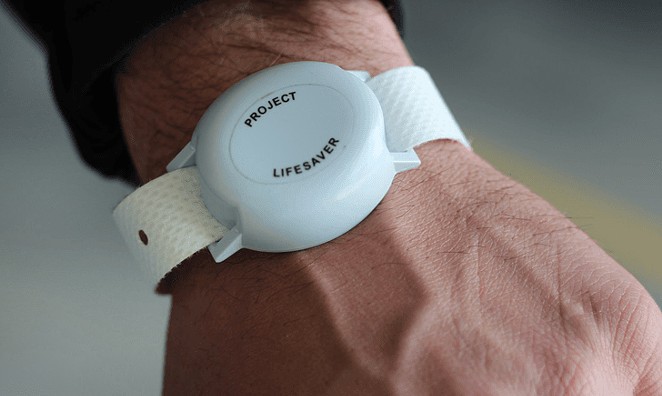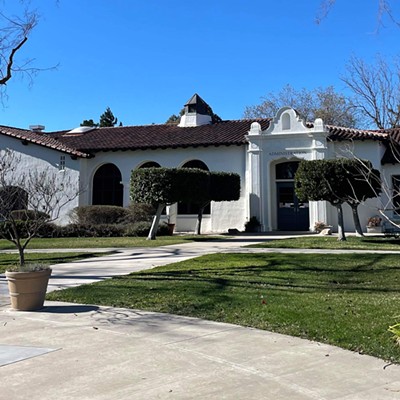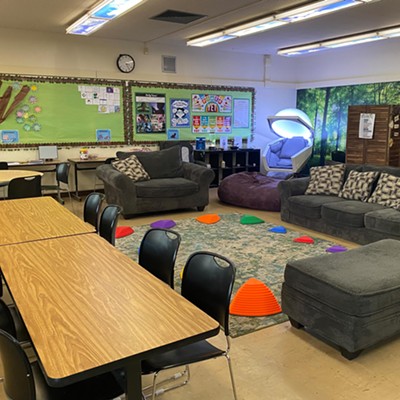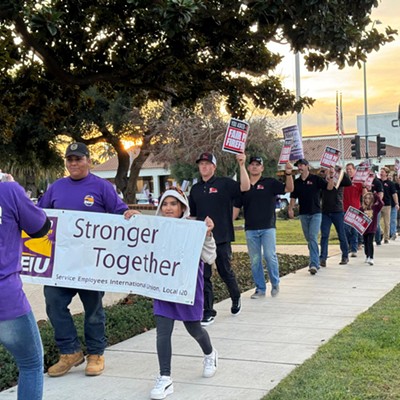A man with dementia was reunited with his family after having been missing for an entire day, according to the Santa Barbara County Sheriff’s Office.
“If you’ve had someone who’s gone missing or prone to confusion or wandering because of some sort of medical condition, [Project Lifesaver] would be a good thing to consider,” Sheriff’s Office Public Information Officer Raquel Zick told the Sun.
Project Lifesaver is a Sheriff’s Office program that started in August 2008 to help families or guardians find their loved ones who face Alzheimer’s, dementia, down syndrome, or other medical conditions that may cause confusion or wandering, Zick said. When families sign up, clients receive a nonremovable bracelet that has a wristwatch-sized transmitter with a unique radio frequency.
Santa Barbara County has 20 active clients and is accepting more to help families find loved ones, she said. If a participant goes missing, families report the incident to the Sheriff’s Office, and rescuers will use specialized antennas to track the frequency and locate the individual, she said.
“As part of [Project Lifesaver], they take a picture of the person, what their name is, what their address is, what the name of the caregiver is, the frequency for their wearable. We keep all that information on file and then it’s sent out to our computer dispatching system,” Zick said. “It’s nice to have all that information available on a moment’s notice.”
Once the individual is located, the Sheriff’s Office deploys Santa Barbara County’s volunteer-based search and rescue team to help find them, she said.
“Additionally, our search and rescue volunteers are trained on what contact is like for that individual who is lost or disoriented and do their very best to make them feel at ease while we work to get them safely returned home,” Zick said.
Project Lifesaver has a 100 percent success rate with finding individuals, she added. It takes about 30 minutes to find someone who’s wandered off with the transmitter, when it can take hours or days to find someone without this technology.
“It cuts down the amount of time these people are missing and out in the community and possibly scared or confused or exposed to the elements. The more we can cut down that time, the better and the better chances people have from rebounding from that incident,” Zick said. “That’s a very challenging time for the family; it’s hard when you have no idea where someone you love and care about has gone.”
The Sheriff’s Office typically sees families with an individual who is already diagnosed with a medical condition, she said.
“For families who have a loved one they are caring for, it can be a lot of work, especially if that person likes to go on long walks or becomes lost. That can be really stressful for the family in that time we try to find them,” Zick said. “This is a great and 100 percent effective tool to find these people and return them home.”
The Sheriff’s Office does not charge anyone to be in Project Lifesaver or for searches, but there is an initial equipment fee for the transmitter and the first year of batteries and wristbands. Sponsorships are available for those in need of financial assistance.
Visit sbcsar.net/project-life-saver for information. Email [email protected] or call Tiffany Hampton at (805) 681-4100 with additional questions.
Highlight
• Santa Maria offers live closed captioning (subtitles) in English or Spanish during its government meetings to improve accessibility and transparency. The closed captioning is for live and replays of City Council and Planning Commission meetings on Comcast Cable Channel 23 and streaming online at cityofsantamaria.org/tv. Channel 23 viewers can use their remote or TV settings to enable captions. English captions are available on CC 1 and Spanish captions are available on CC 3 in the settings. According to census data, about 66 percent of Santa Maria’s population speaks a language other than English at home. City Council and Planning Commission meetings broadcast live the first and third Tuesdays and Wednesdays of the month, respectively, with both meetings starting at 5:30 p.m. The meetings are also rebroadcast the other Tuesday and Wednesday nights in the month along with 9 a.m. morning replays of the City Council on Thursdays and the Planning Commission on Fridays.
Reach Staff Writer Taylor O’Connor at [email protected].














